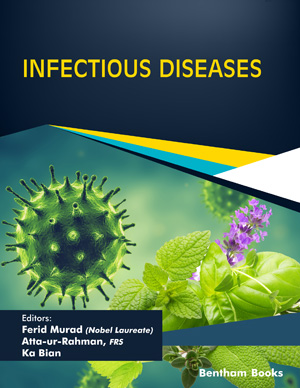Abstract
Aims: The study aimed to assess the antihyperglycemic activity of Pulicaria mauritanica.
Background: Pulicaria mauritanica is a medicinal and aromatic plant used for the treatment of many diseases such as inflammation, diabetes, and intestinal disorders.
Objective: The main goals of this present paper were to confirm the antihyperglycemic capacity of aqueous extract from Pulicaria mauritanica in normoglycemic and diabetic rats over a period of time (7 days of treatment).
Methods: The effect of the aqueous extract of Pulicaria mauritanica from aerial parts (AEPM) on glucose and lipid metabolism was tested using an acute test (single dose during 6 hours) and subchronic assay (repeated oral administration for seven days) at a dose of 60 mg/kg and the serum glucose levels were measured in normoglycemic and streptozotocin(STZ)-induced diabetic rats. In addition, the glycogen content in the liver, extensor digitorum longus (EDL), and soleus was evaluated. The antioxidant activity, phytochemical screening, and quantification of some secondary metabolites of this extract were also performed.
Results: AEPM at a dose of 60 mg/kg reduced the plasma glucose concentrations significantly in STZ-induced diabetic rats after a single oral administration (p<0.05). This lowering effect became more significant during the repeated oral administration in hyperglycemic rats (p<0.0001). Also, the findings showed that this plant exhibited a significant increase in liver and skeletal soleus muscle glycogen content in diabetic rats. AEPM revealed a remarkable antioxidant activity in addition to the presence of polyphenol compounds such as flavonoids, tannins, saponins, sterols, glucides, terpenoids, quinones, anthraquinones, and mucilage.
Conclusion: The study shows that AEPM exhibits antihyperglycemic activity in diabetic rats, and it increases liver and muscle glycogen content.
Keywords: Antihyperglycemic, streptozotocin, Pulicaria mauritanica, glycogen content, medicinal plant, aqueous extract.
Graphical Abstract
[http://dx.doi.org/10.1177/0091270010376972] [PMID: 20705952]
[http://dx.doi.org/10.1016/j.diabres.2011.10.029] [PMID: 22079683]
[http://dx.doi.org/10.1007/s40242-012-2218-9]
[http://dx.doi.org/10.1016/j.diabres.2019.107843]
[http://dx.doi.org/10.1016/S0041-0101(00)00154-9] [PMID: 11072038]
[http://dx.doi.org/10.1002/ffj.3223]
[http://dx.doi.org/10.4314/jab.v84i1.5]
[http://dx.doi.org/10.2174/1871529X17666170918140817] [PMID: 28925906]
[http://dx.doi.org/10.2174/2210315508666180327120434]
[http://dx.doi.org/10.1016/S0308-8146(02)00423-5]
[http://dx.doi.org/10.1002/jsfa.2740290908]
[PMID: 19009762]
[http://dx.doi.org/10.1126/science.107.2775.254] [PMID: 17814729]
[http://dx.doi.org/10.1016/S0021-9258(18)65284-6] [PMID: 13331917]
[http://dx.doi.org/10.1016/S0378-8741(02)00315-X] [PMID: 12648821]
[http://dx.doi.org/10.1042/CS19990109] [PMID: 10600655]
[http://dx.doi.org/10.1186/s12944-018-0688-6] [PMID: 29592809]
[http://dx.doi.org/10.1042/bj3360019] [PMID: 9806880]
[http://dx.doi.org/10.1007/s001250050746] [PMID: 9243095]
[http://dx.doi.org/10.1042/bst0250019] [PMID: 9056835]
[http://dx.doi.org/10.1038/s41419-021-03791-9] [PMID: 34006821]
[http://dx.doi.org/10.4161/oxim.2.5.9498] [PMID: 20716914]
[http://dx.doi.org/10.3390/ijms11041365] [PMID: 20480025]
[http://dx.doi.org/10.7150/ijbs.11241] [PMID: 25892959]
[http://dx.doi.org/10.19082/1832] [PMID: 26955456]
[PMID: 23860893]

















